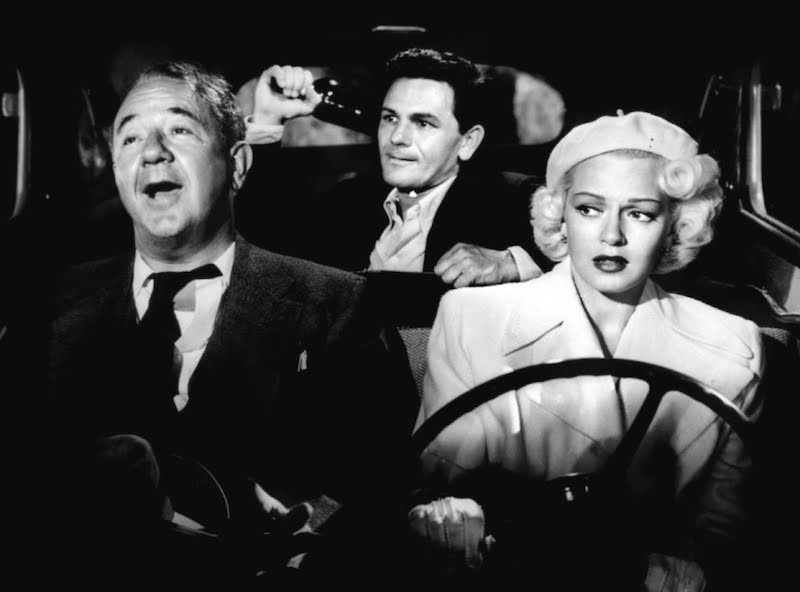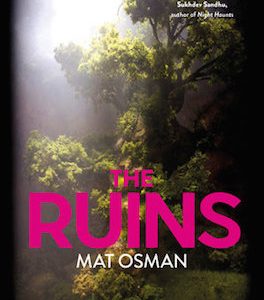Catch up on the series and find new installments daily here.
__________________________________
The Postman Always Rings Twice (1946)
__________________________________
TYPE OF FILM: Noir
STUDIO: Metro-Goldwyn-Mayer
PRODUCER: Carey Wilson
DIRECTOR: Tay Garnett
SCREENWRITERS: Harry Ruskin and Niven Bush
SOURCE: The Postman Always Rings Twice, novel by James M. Cain
RUNNING TIME: 113 minutes
PRINCIPAL PLAYERS:
Lana Turner……………………………………………………………………………..Cora Smith
John Garfield………………………………………………………………….…..Frank Chambers
Cecil Kellaway…………………………………………………………………………Nick Smith
Hume Cronyn…………………………………………………………………………Arthur Keats
Audrey Totter………………………………………………………………………Madge Garland
Leon Ames…………………………………………………………………………….Kyle Sackett
Alan Reed……………………………………………………………..………..Ezra Liam Kennedy
Wally Cassell……………………………………………………………………………………Ben
Jeff York………………………………………………………………………………………Blair
__________________________________
DID YOU KNOW?
__________________________________
It took twelve years to get James M. Cain’s book filmed because of the powerful resistance of the Production Code Authority (PCA), the official censoring body of Hollywood that found everything about the book objectionable. Its tawdry sexuality, adultery, murder, and the dishonesty of the lawyers and insurance company officials were all deemed unsuitable for audience sensibilities. The PCA felt so strongly about Cain’s book that in 1934 it warned RKO, which wanted to make the motion picture, that they would never allow it to be released. Columbia and Warner Brothers, also interested in the rights, were told that the film could never receive approval. Within two hours of Columbia’s accepting the PCA’s verdict, M-G-M acquired the rights, convinced it could get a screenplay that would pass muster. But by April of the same year, M-G-M, too, became convinced that it could never get approval and shelved it. Six years later, a script was submitted that removed the adultery, virtually all the sex, and the murder attempts on Nick, who would die accidentally. Even then, the PCA judged that it was too sordid, and it was again abandoned. The enormous popularity of Cain’s Double Indemnity revived interest in the earlier novel, and in May 1945 a script was approved, restoring all but some of the more graphic sex to Cain’s original version. Lana Turner, the ultra-sexy star, initially turned down the role because of the steaminess of the subject but was finally persuaded to take the part.
__________________________________
THE STORY
__________________________________

Drifter Frank Chambers stops at a roadside diner, spots the luscious Cora, and takes a job offered by her older, alcoholic husband, Nick. Frank and Cora are immediately attracted to each other, begin an illicit affair, and leave together, but Cora changes her mind and they return to the diner. Wanting a better life with Frank, both financially and romantically, Cora convinces him to help her kill her husband so they can be together and collect the insurance money. Just as Cora smashes Nick’s head with a bottle, planning to make his death look like a bathtub accident their cat trips a power line, plunging the diner into darkness and foiling the plan.
Frank and Cora make a second attempt to kill Nick, getting him drunk and staging an automobile accident, and this time they are successful, though they have made District Attorney Kyle Sackett suspicious. Sackett tricks Frank into signing a document that states that Cora tried to kill him and Nick, which convinces Cora to sign a confession. An agreement is reached in which Cora pleads guilty to manslaughter. On probation, she and Frank do not see or speak to each other because of mutual mistrust, but then they decide to marry and run the diner together.
When Cora visits her sick mother, Frank has an affair with a woman he meets at the train station, and Cora learns of it. She tells Frank she is pregnant. Distrustful and disappointed with him, she decides to kill herself by going for a long swim in the ocean and, too exhausted to return to shore, drowning. When she tells Frank to swim back without her, they realize that they really do love each other and he manages to save her. On the drive home, he loses control of the car and she is killed.
Frank is arrested and convicted for murdering Cora. Although he got away with the murder of Nick, he now faces execution for a crime he did not commit.
***
Like Double Indemnity and so many other noir novels and films, The Postman Always Rings Twice is driven by the bad girl who becomes the object of sexual desire for a man who will do virtually anything to have her, usually including murder. The novel, written in 1934, paved the road for all the noir fiction and film that followed.
Some elements of The Postman Always Rings Twice sprang from real life, notably the infamous Ruth Snyder murder case, in which the defendant murdered her husband with the help of her lover, who she then tried to poison. Cora was modeled on a girl who pumped Cain’s gas at a service station. She was kind of cheap, Cain acknowledged (more like Cora of the novel than the Cora of the motion picture, who just seemed too classy to be working at a roadside diner), but so sexy that she stuck in his memory.
As inappropriate as Lana Turner seemed for the role of Cora, surely the oddest bit of casting was having Cecil Kellaway as Nick, who in the novel was a rough, drunken boor who treated his wife very badly. It is stretching credulity to think that Lana Turner would ever have been married to Cecil Kellaway.
When the major studios were unable to get the motion picture past the censors, Cain adapted The Postman Always Rings Twice for the stage in 1936, hoping that a Broadway smash would grant it an aura of respectability. The play flopped, as did a French film version, Le Dernier Tournant, made in 1939, and an Italian version Ossessione, made in 1942.
A commercially successful remake was released in 1981, starring Jack Nicholson as Frank and Jessica Lange as Cora. David Mamet’s screenplay was far more faithful to the novel, but the heightened violence did not enhance the film.
John Garfield had been released from military service because of a bad heart. It was reported at the time that Turner and Garfield had even more chemistry off the set than on it but that Garfield decided to otherwise occupy his free time for fear that he would have a heart attack.
__________________________________
BEST LINE
__________________________________
Where have you heard this before? In a line used so frequently during the past half century that it is more self-parody than a cliché, Frank Chamber’s line to Madge Garland, the girl he picks up at the train station, was used here first: “With my brains and your looks,” he tells her, “we could go places.”


















